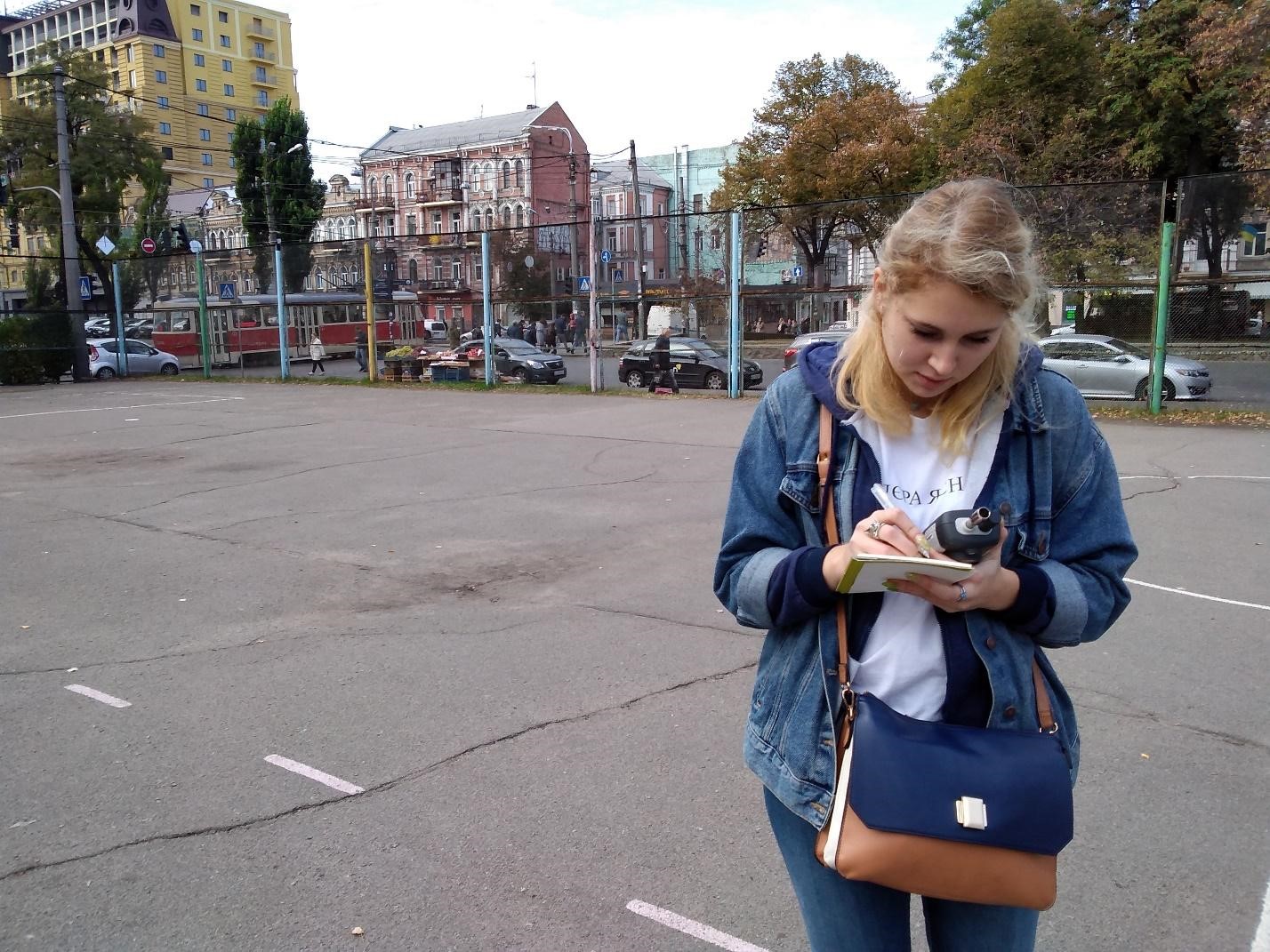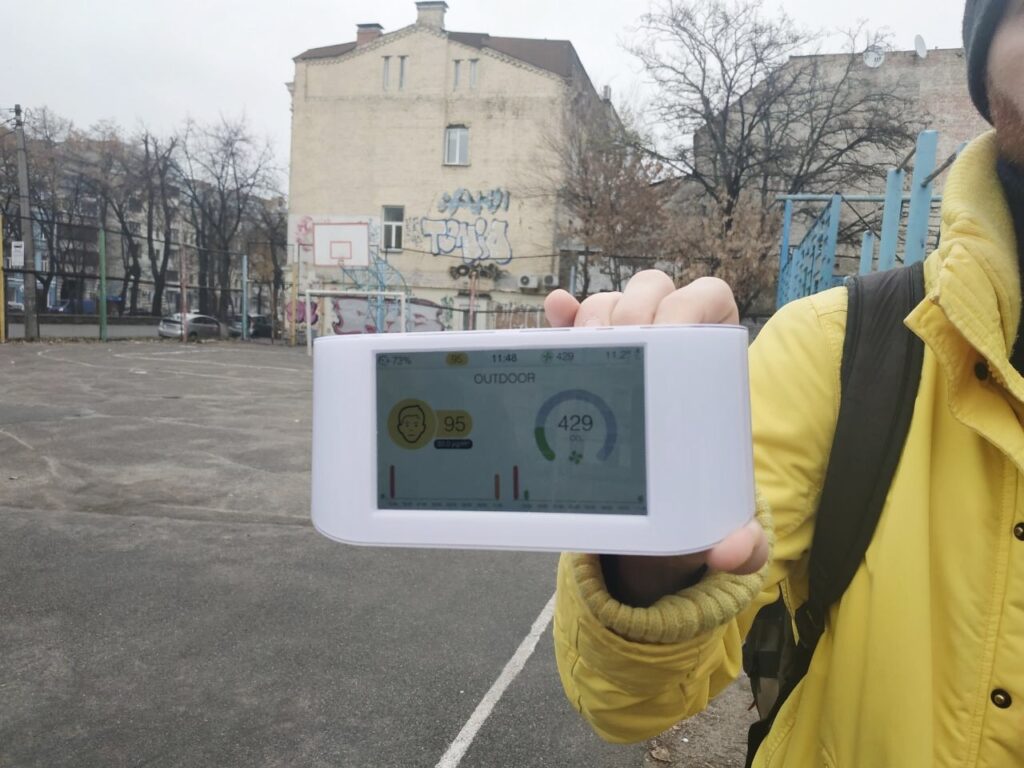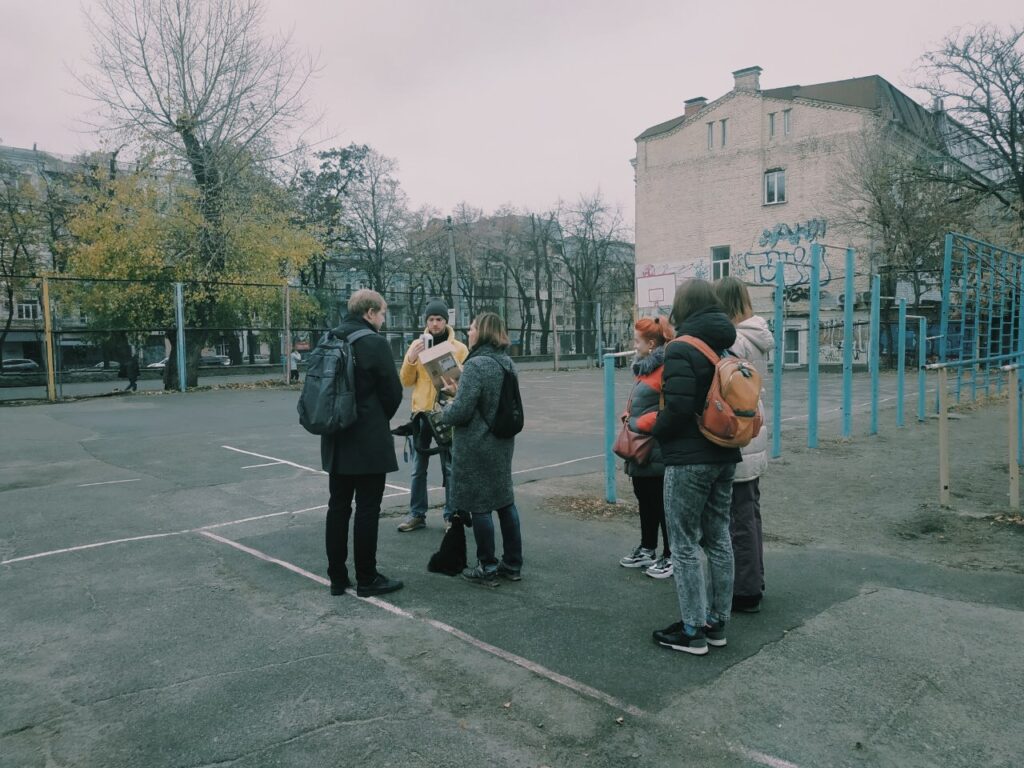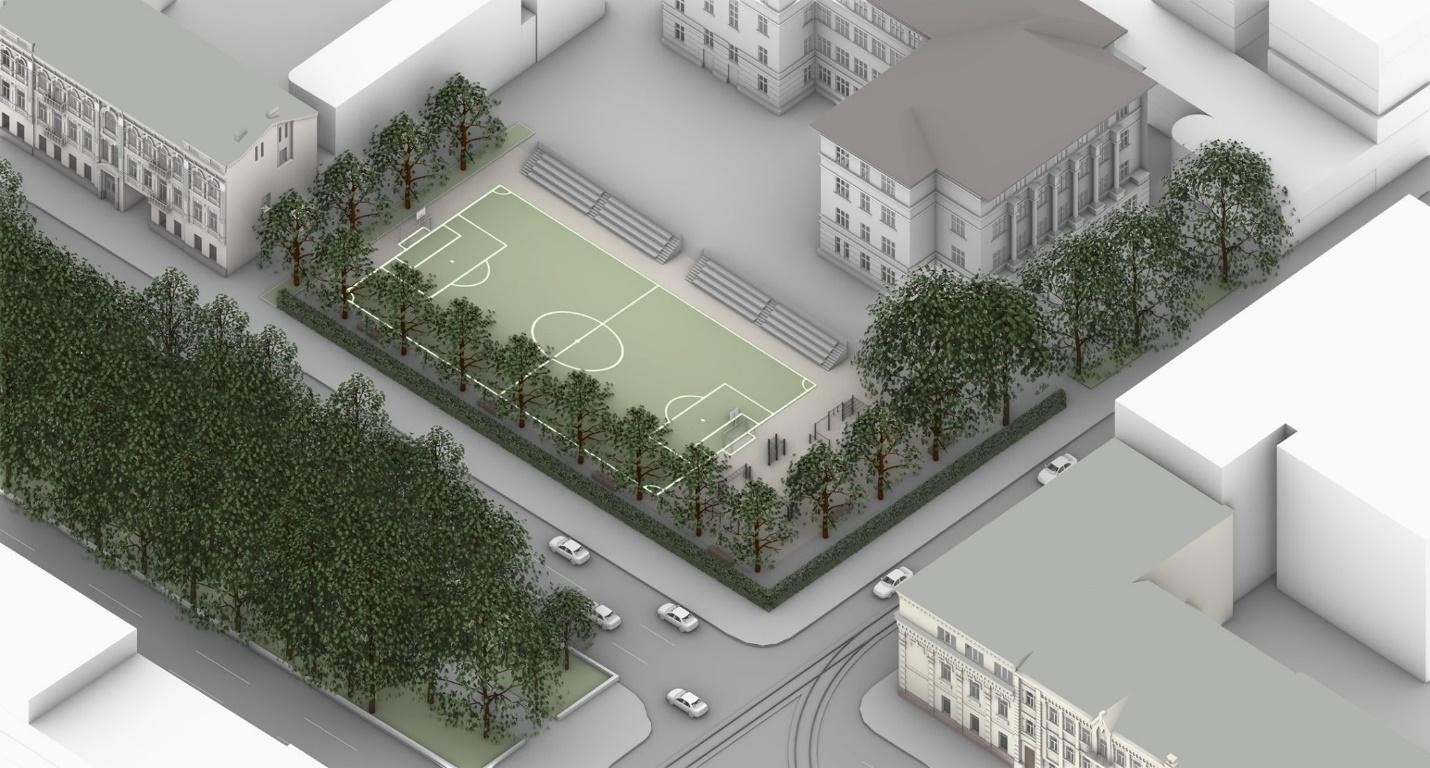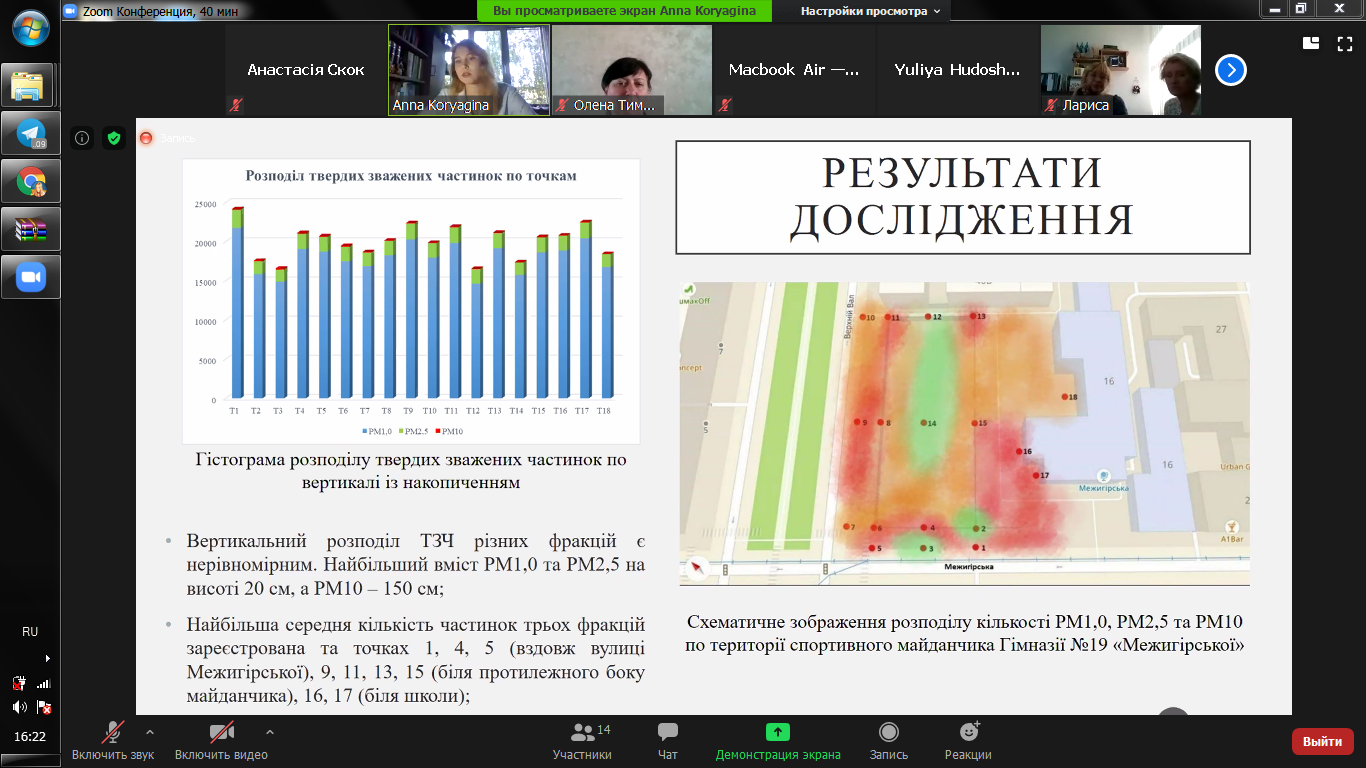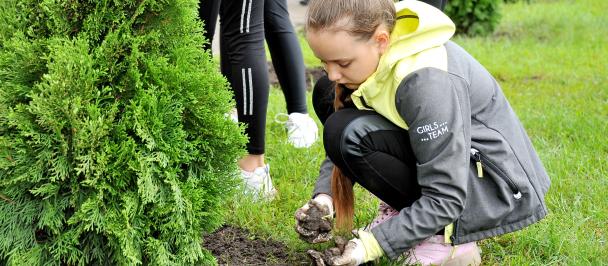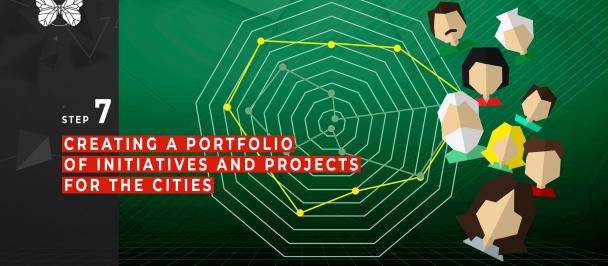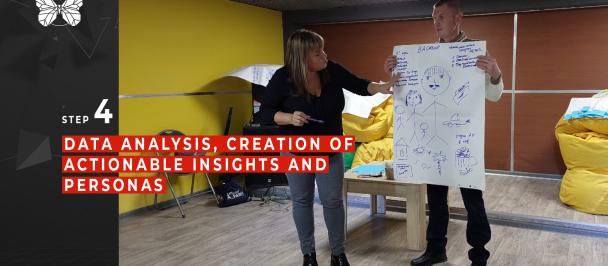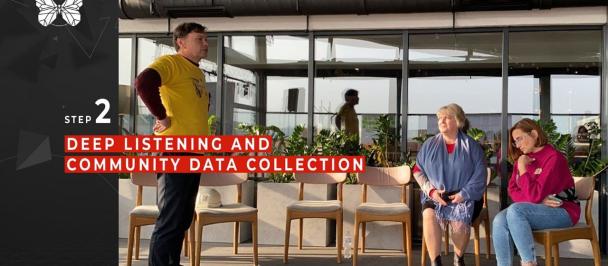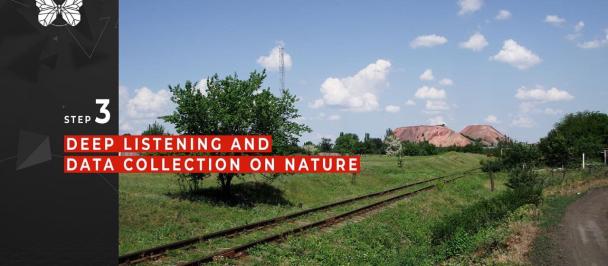The sports ground of Mezhyhirsk gymnasium in Kyiv’s Podil district is right next to a busy roadway – not the ideal location for the pursuit of physical fitness. But given that moving the entire sports ground is impossible, what could be done to improve the area’s air quality? Anna Koryagina, an ecologist and a participant of the Community Safari in Podil district in Kyiv, set out to find an answer.
Photo courtesy Anna Koryagina
Experimentation team: Anna Koryagina, Andriy Kulibaba, Kateryna Mykhaylenko, Artem Perkevych, Yana Nikolashyna, Kateryna Rostovska
Architect: Olena Melnyk
"For me personally, this whole story started when I was choosing a topic for my diploma paper," Anna Koryagina says, smiling. She probably would have never started measuring the dust level at the sports ground but for her professor. He insisted that dust pollution to be Anna’s topic for her Bachelor’s degree paper. It was a more exciting topic than studying theory or exploring the development of an eco-friendly mindset through media analysis. The young ecologist has no regrets over choosing this research topic. Eventually, everything "turned out even better," she says.
Anna studied dust pollution for a whole year, and the sports ground of the Mezhyhirya gymnasium became a testing ground as she searched for practical solutions. Then, this very location was selected as the site for a research project by one of five teams of the Community Safari initiative. The safari is a quest to explore environmental issues in Podil district in Kyiv, which was jointly organized by the UNDP Accelerator Lab, the "Agents of Change" environmental NGO, and the "Green Wave" EcoClub.
The problem
Photo courtesy NGO "Agents of Change"
The building that now houses the Mezhyhirya Gymnasium has been used as an educational institution since 1936. It has never had an indoor gym. During physical education classes, schoolchildren are running run about on the paved playground, which is separated from the roadway only by a wire mesh fence. The schoolchildren are thus exposed to air polluted by vehicle exhaust fumes – which is particularly dangerous for them when they are doing sports activities.
Anna explains the problem: “Oxygen enters our blood through the lungs, but along with the oxygen, we also inhale extremely tiny particles of urban dust, which can affect the processes in our body. During sports, the heart pumps blood more actively. Also remember that teenagers are going through a stage of rapid growth when all biological processes in the body are accelerated.”
Every morning, for fifteen weeks, Anna came to the school playground to measure temperature, humidity, wind strength, and the presence of dust in the air. She took a total of 1,620 samples from 18 points around the sports ground, analyzed the results, and concluded that there was a serious problem.
"When doctors advise people to air the rooms and do wet cleaning, we listen to these recommendations. However, we forget that dust could well be an issue in outdoor spaces as well. Urban dust could cause the development of respiratory and cardiovascular diseases, and cancer tumours. The situation with this sports ground thus really needs to be resolved,” the young researcher says.
Photo courtesy NGO "Agents of Change"
What can be done?
The problem of air pollution at the sports ground at Mezhyhirsk gymnasium was first raised in 2009. At that time there were some plans to build a new roofed gym for the school. However, the idea never came to fruition.
So how can this issue be resolved now – without spending lots of money? Anna has come up with two solutions: to install a noise-absorbing glass screen or to create a living hedge of plants. “It is necessary to create a "Green Fortress", a physical obstacle to dust penetration. This is a pure physics. One can plant any plants that would fence off the playground. For example, meadowsweets (spiraea) grow up to two meters and could be a perfect dust barrier. It would be an even better solution to install a noise-absorbing shield that would both protect from dust and reduce the noise at the playground and in the gymnasium,” she says.
Illustration by Olena Melnyk
While solutions to the problem are there, making them happen requires finding support and funding. Running around government agencies to get permissions is not the main issue, Anna says. "What is essential is publicity. It’s not enough to hang posters on the fence around the sports ground," the ecologist says. She says the issue concerns not only the threat to children’s health, but also about the aesthetic looks of Podil, the oldest district of Kyiv. There will be people who care about both, and who will definitely support the initiative.
The purpose of the experiment of Anna's team was thus to prove that raising awareness among those who use the sports playground and channelling their efforts into a socially meaningful cause was the key to solving this problem.
The team prepared a project presentation for the parents’ board and the school administration. At the presentation, the school principal said that the school administration has been struggling for 10 years to find funding to fix the playground, but to no avail: “Our gymnasium is located in the historical centre of the Podil district and should be one of the area’s jewels,” the scools principle says. “We want to be seen, heard and supported by parents, public organizations and the city administration. You have joined in solving this problem from an environmental perspective, which is even more important than just external aesthetics. We’re finally talking about the children's health and safety.”
Photo courtesy Anna Koryagina
Small steps
The initiative has indeed won support, and now all of its supporters are mobilizing their efforts to implement the “Green Fortress” solution, starting with some small steps: finding funds to buy seeds and plant a green bush fence during this summer. Then in autumn, the sports playground will be slightly better and safer. Afterwards, they will plan how to construct a real "green fortress."
Anna’s research has been completed, her recommendations are ready, and her diploma paper has been defended. However, she is not planning to stop at this point. She says that she still wants to finalise this project and resolve the issue. Anna adds that no matter whom she talks to, she always bring up environmental issues and urban planning: “First of all, I’m really concerned about this. Secondly, I think a lot about these issues. Thirdly, I’m glad to see a positive response from people to my eco ideas."
The ecologist explains that we as humans are only "renting" a part of the natural space in our city. Therefore, in order to be a sustainable society, living in harmony with nature, we have to take care of it.
"If we learn to work with nature on an equal footing, and not from the position of a ‘big humans’ and ‘small nature,’ then, I think, life for us both will be so much better."
Read the full text of the interview with Anna in the blog by the "Agents of Change" NGO.
Learn more about the UNDP’s Community Safari initiative and five pilot projects implemented by safari participants in Kyiv.
You can also join an online group of environmental change-makers.
Text: Yulia Hudoshnyk, Oksana Udovyk, Oleksiy Moskalenko and Yevhen Kylymnyk
Translation: Kateryna Kravchenko; Editing: Euan Macdonald, Tetyana Kononenko

 Locations
Locations


